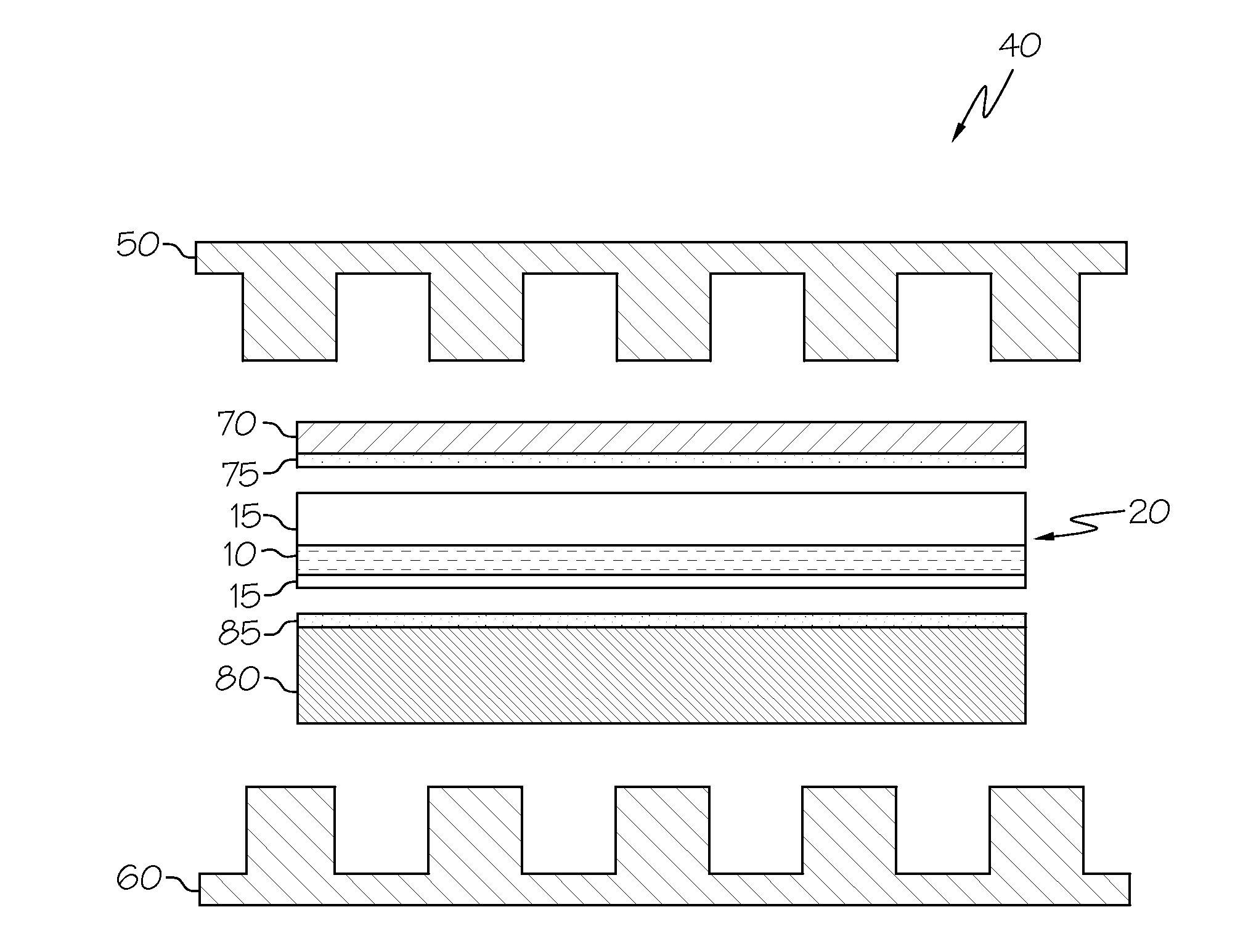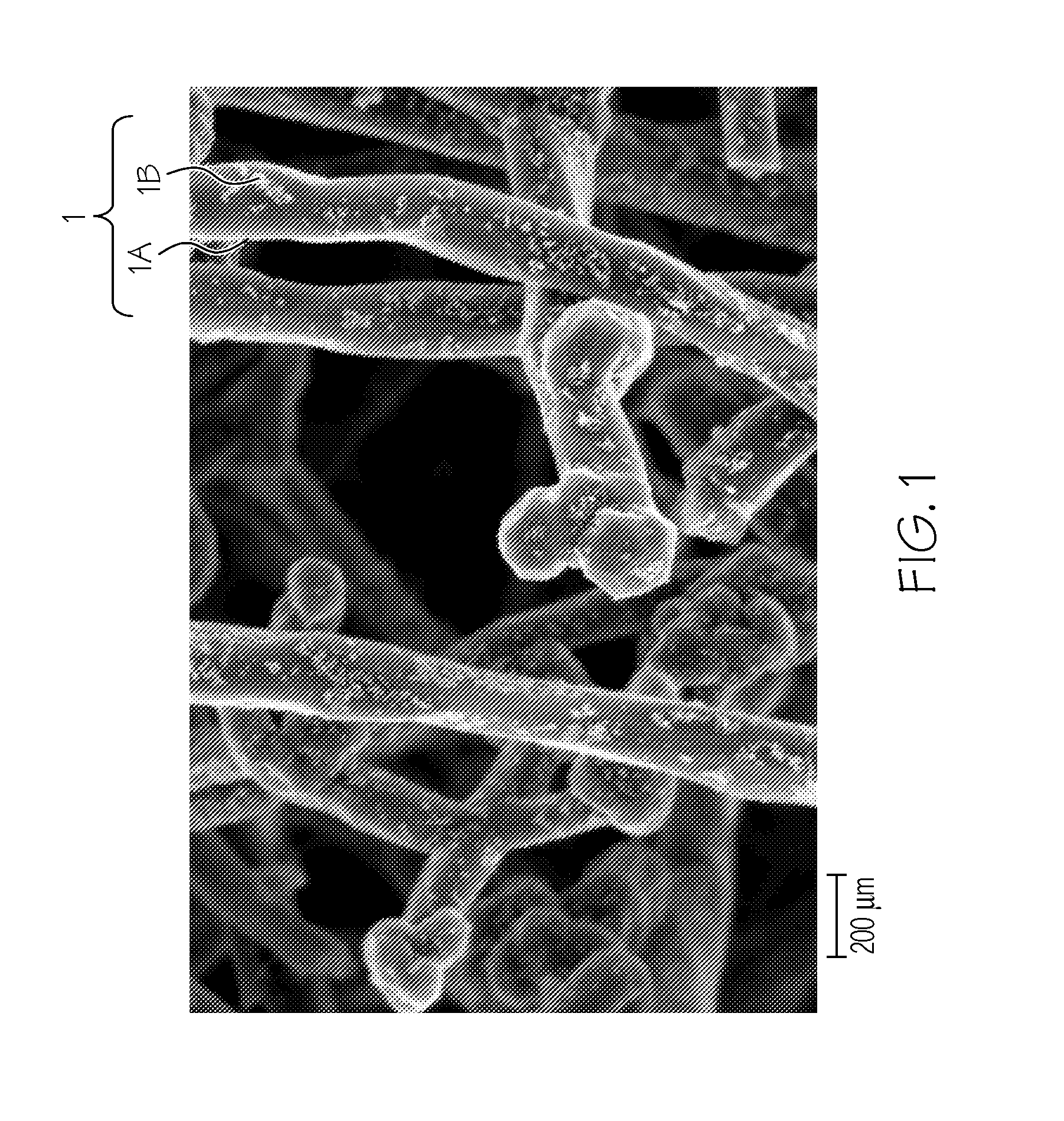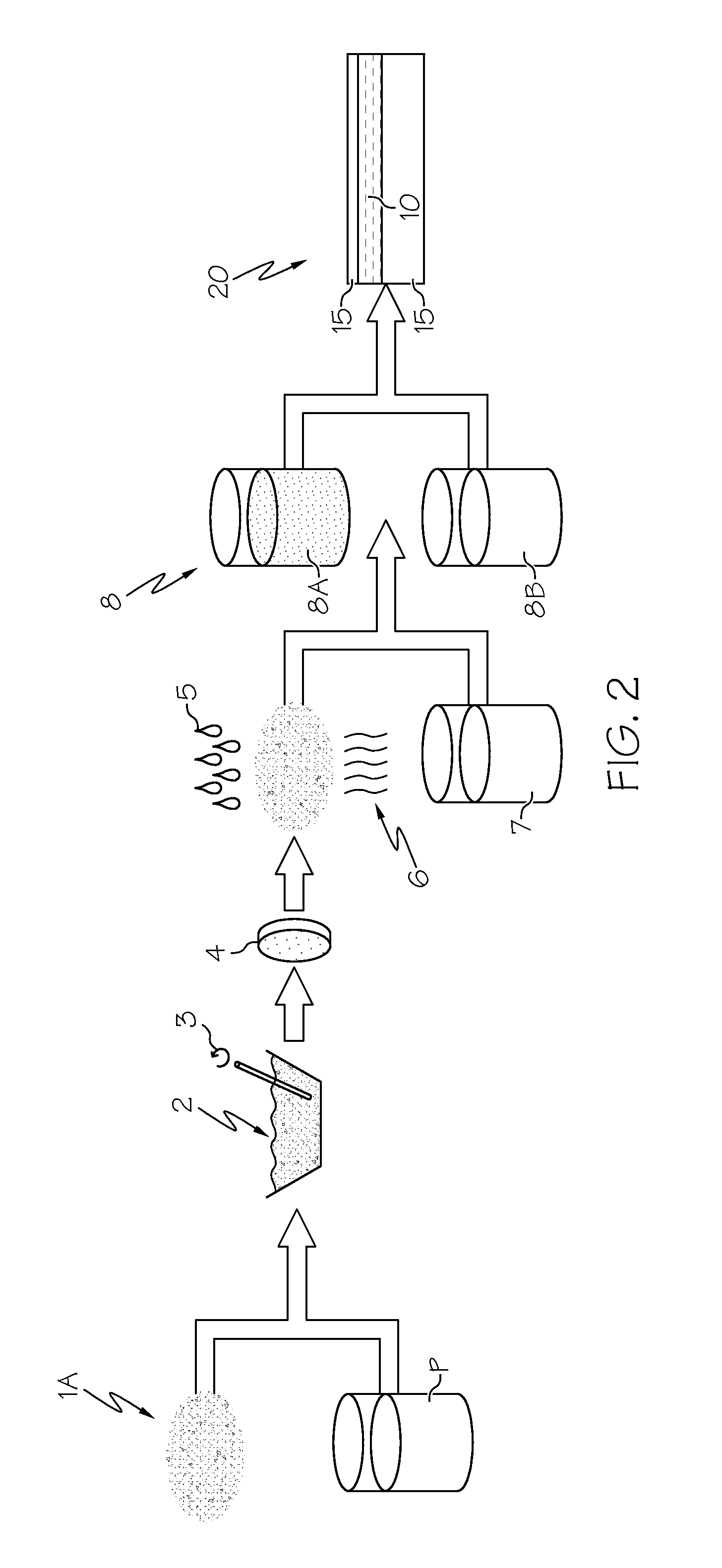Nanofiber Supported Catalysts As Membrane Additives For Improved Fuel Cell Durability
a technology of fuel cell and membrane additive, which is applied in the direction of cell components, final product manufacturing, sustainable manufacturing/processing, etc., can solve the problems of fuel cell pem failure and the need for durability, and achieve the effect of improving mechanical and chemical durability and improving the durability of fuel cells
- Summary
- Abstract
- Description
- Claims
- Application Information
AI Technical Summary
Benefits of technology
Problems solved by technology
Method used
Image
Examples
Embodiment Construction
[0019]This invention relates to developing nanofiber-supported catalysts and applying them as additives to create a reinforced layer that in turn can be used in conjunction with non-reinforced layers that together make up multilayer fuel cell membranes. By applying thin (for example, less than 1-2 μm) coatings via multiple passes, the nanofiber additives in the reinforced layers may be substantially maintained in the in-plane direction to optimize the strengthening effect in the deposited plane. The nanofiber materials may be organic (e.g., polymer (such as polyvinylidene fluoride (PVDF) or polyether sulfone (PES)) or inorganic (e.g., carbon, metal, ceramic oxide and composites (e.g., CeO2, MnO2, TiO2, ZrO2, or CeZrO4)). The nanofiber materials can be electrically conductive (e.g., carbon, or metal) or non-conductive (e.g., ceramic oxide and composites). As shown below, an MEA made with such a multilayer membrane having reinforced and non-reinforced layers demonstrates improved chem...
PUM
| Property | Measurement | Unit |
|---|---|---|
| wt % | aaaaa | aaaaa |
| weight percent | aaaaa | aaaaa |
| weight percent | aaaaa | aaaaa |
Abstract
Description
Claims
Application Information
 Login to View More
Login to View More - R&D
- Intellectual Property
- Life Sciences
- Materials
- Tech Scout
- Unparalleled Data Quality
- Higher Quality Content
- 60% Fewer Hallucinations
Browse by: Latest US Patents, China's latest patents, Technical Efficacy Thesaurus, Application Domain, Technology Topic, Popular Technical Reports.
© 2025 PatSnap. All rights reserved.Legal|Privacy policy|Modern Slavery Act Transparency Statement|Sitemap|About US| Contact US: help@patsnap.com



